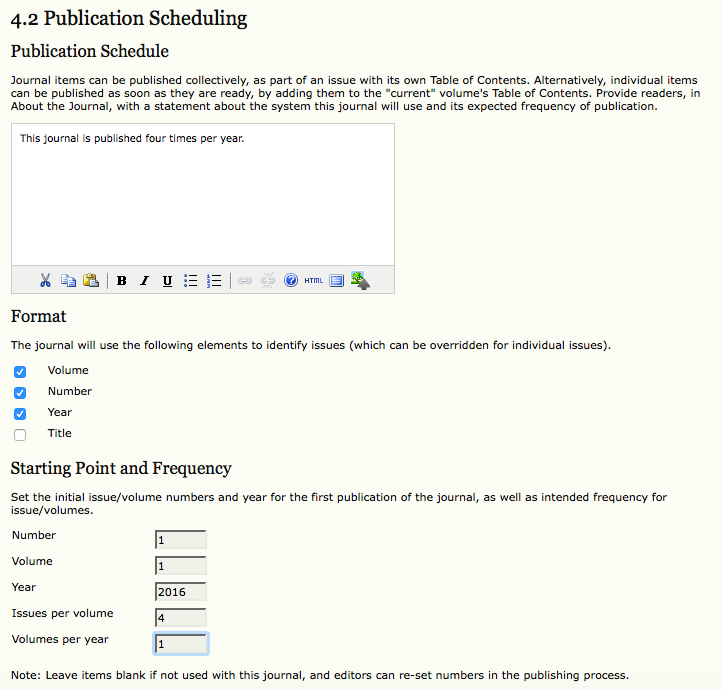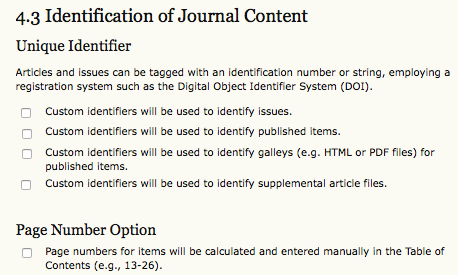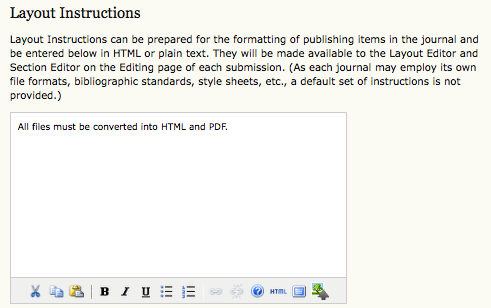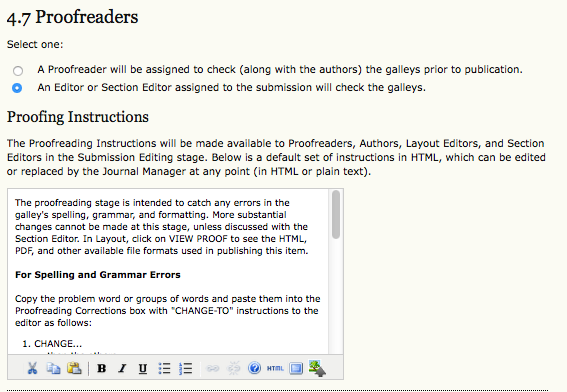
Here you can set the journal’s Open Access policy, control how users register on the site and for what, and define copyedit and layout instructions.
This section provides a number of options for access to your journal’s content.



OJS allows you to set the publication schedule that is best for your journal.

Digital Object Identifiers are becoming increasingly common for online journals, and OJS supports them. You can visit The DOI System to learn more about registering for a Digital Object Identifier for your journal. A page number option is also available for journals. This is often useful for print journals that are going online.

This allows you to create an Announcements page for your journal web site, and post messages to your readers. Once this is activated, an Announcements link will automatically appear in the navigation bar of the journal, and an Announcement section will be added to the Journal Manager’s Management Pages menu.

The Copyeditor edits submissions to improve grammar and clarity, works with authors to ensure everything is in place, ensures strict adherence to the journal’s bibliographic and textual style, and produces a clean, edited copy for the Layout Editor to turn into the galleys that will be in the published format of the journal. If you have individuals to act as copyeditors, select the first option. If your editors will be acting as copyeditors, select the second option. The instructions will be made available to copyeditors, authors, and section editors in the Submission Editing stage.

The Layout Editor transforms the copyedited versions of the submission into galleys in HTML, PDF, PS, etc., files which the journal has elected to use for electronic publication. If you have individuals to act as layout editors, select the first option. If your editors will be acting as layout editors, select the second option.

Further options in this section include:




The Proofreader carefully reads over the galleys in the various formats in which the journal publishes (as does the author). The Proofreader (and the Author) records any typographic and formatting errors for the Layout Editor to fix. If you have individuals to act as proofreaders, select the first option. If your editors will be acting as proofreaders, select the second option. The instructions will be made available to proofreaders, authors, layout editors, and section editors in the Submission Editing stage.